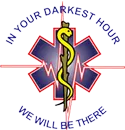Course Details
Description

CPR is performed when a patient has collapsed, is not breathing effectively and their heart is not circulating blood. As a healthcare provider you may come across a person requiring CPR in or out of hospital. CPR is performed to ensure oxygenated blood circulation, specifically to perfuse the patient’s brain and heart. This enables the brain and heart to remain “alive” until a normal heartbeat is achieved and good perfusion to the brain is restored. In essence, CPR is used to bridge the gap between sudden cardiac arrest and the arrival of advanced medical interventions.

2Y Certificate Validity
Content
During the CPR for Professionals course, attendees will learn:
-
- The purpose of CPR
- Identification of a patient who is in need of CPR
- Activation of emergency medical services, emergency response systems and procedures in a professional environment.
- Performance of adult, child and infant CPR as an individual and as a team.
- Provide effective ventilations using a barrier device and a pocket mask.
- Provide effective ventilations using a Bag-Valve-Mask (BVM) device.
- The use of an Automated External Defibrillator (AED).
- CPR with the use of an Advanced Airway.
- Provide effective rescue breaths.
- Assist a patient who is choking.
- Perform the recovery position for semi-conscious or unconscious patients.
What You Will Receive
-
-
25 page student workbook.
-
CPR pouch with mouth piece and gloves.
-
RCSA certificate of competence valid for two years.
-
15 CPD points.
-
5 SACE points.
-
Requirements
-
- Proficiency in CPR and the use of an AED.
- Score of at least 84% in the final written evaluation.
